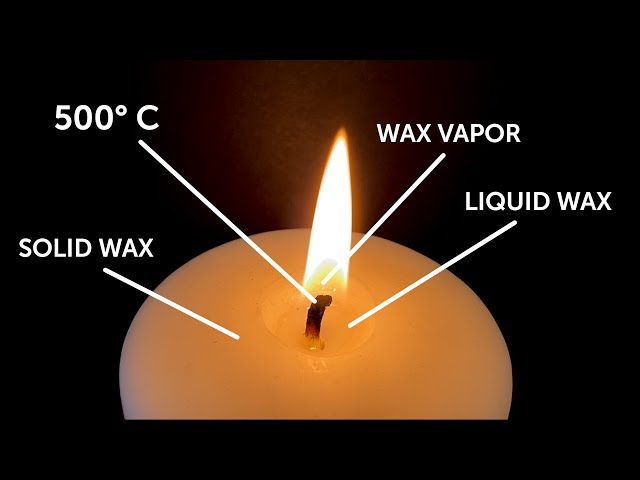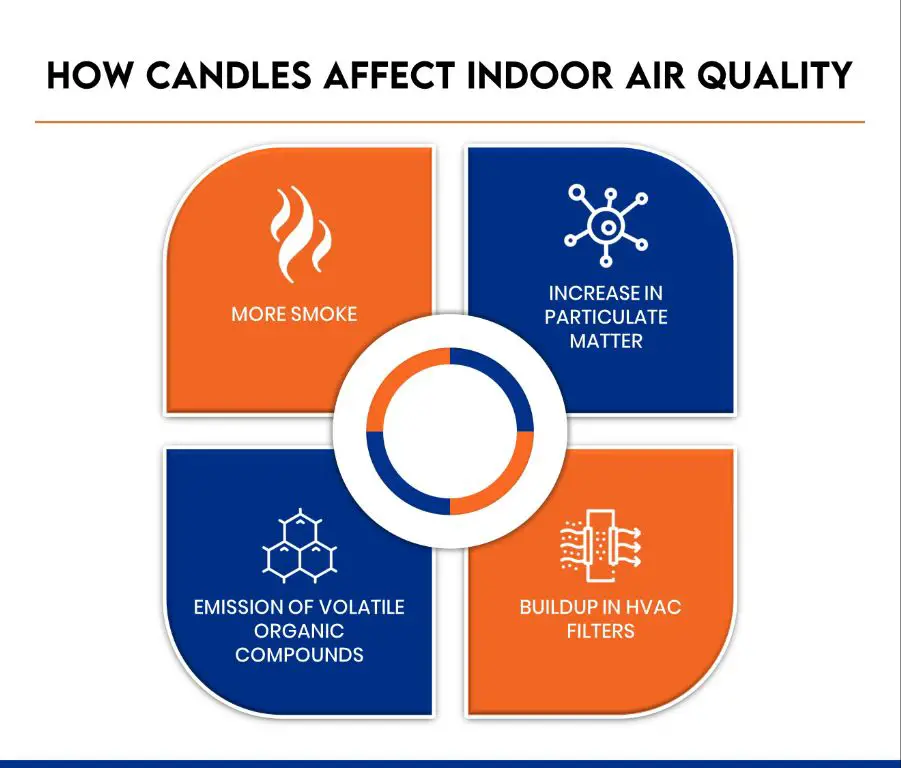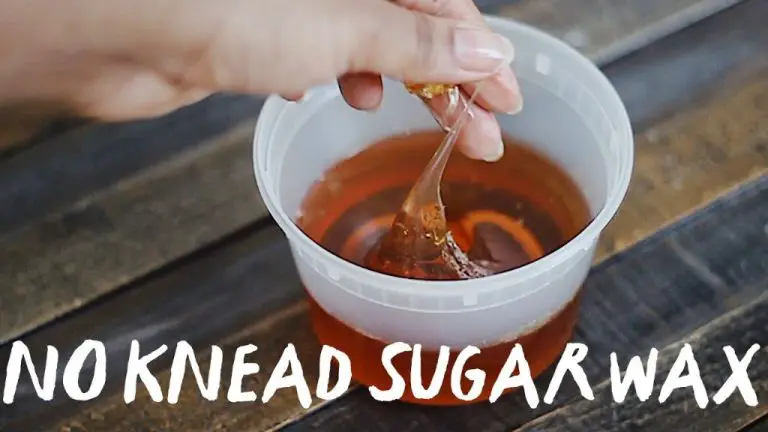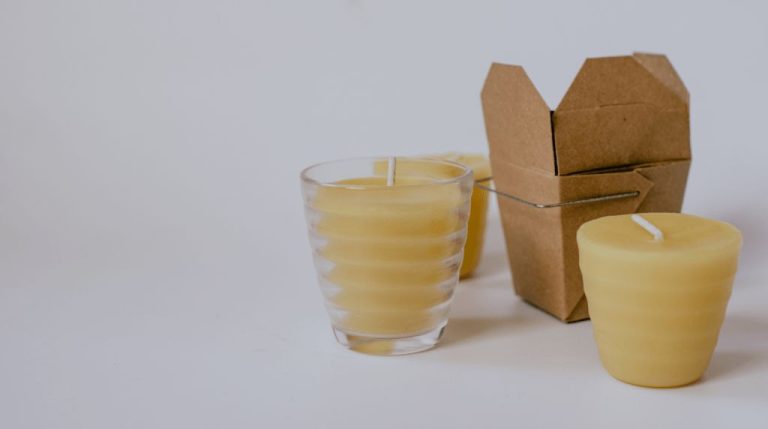Does White Wax Clog Pores?
What is white wax?
White wax is a type of wax made from bleached beeswax. It has a pale white or off-white color. According to Drugs.com, white wax is made by bleaching natural beeswax through chemical processes or by repeatedly rolling it very thinly and exposing it to light and air. This bleaching process removes the yellow pigments from beeswax, resulting in a white wax product.
The main uses of white wax are in cosmetics, pharmaceuticals, and art. In cosmetics, it is used to thicken oils, make balms, and create waxy lip products. Pharmaceutically, it helps create suppositories and ointments. Artists use it for encaustic painting. Compared to beeswax, white wax has a higher melting point and increased pliability due to the bleaching process. It is also less sticky and tacky than beeswax.
How waxing works

Waxing involves applying a thick wax paste to the skin and allowing it to cool and harden. The wax attaches itself to the hair strands above the skin. The temperature the wax is applied at is important – it needs to cool to the ideal temperature that allows it to adhere properly to the hairs. According to https://jontomas.com/blogs/news/how-does-body-hair-waxing-work-heres-what-you-need-to-know, the wax needs to cool to a temperature between 115-120 F to achieve the right consistency for gripping the hairs effectively.
Once the wax has hardened, a technician will quickly pull off the wax in the opposite direction of the hair growth. This removes the entire hair follicle since the wax has encased the whole strand in wax. The wax pulls the hair out by the root. This provides longer lasting results compared to shaving which only cuts the hair at the surface of the skin. The waxing process has to be done repeatedly since it does not permanently remove the hair.
Can wax clog pores?
Waxing can temporarily increase the risk of clogged pores due to the way it removes hair from the follicle. According to Byrdie [1], waxing opens up hair follicles, leaving them exposed to bacteria, dead skin cells, and debris that can lead to clogging. When these elements enter the open follicles, they can become trapped and create blockages.
However, wax itself does not directly clog pores. Whether or not pores become blocked depends on several factors:
- Skin sensitivity – Sensitive skin is more prone to inflammation and clogging.
- Hair thickness – Coarse, thick hair may be more likely to allow debris to enter follicles when pulled.
- Dead skin cells – Excess dead skin can contribute to clogged pores post-waxing.
- Preparation – Properly cleaning and exfoliating the skin pre-wax reduces risk.
- Aftercare – Applying antibacterial creams and avoiding touching the skin can prevent clogging.
Overall, while waxing can potentially increase the chances of clogged pores temporarily, good waxing prep and aftercare reduces the risks. For most people, waxing should not cause ongoing issues with clogged pores or acne.

Ingredients in white wax
The main ingredients in white wax are typically paraffin or beeswax. Paraffin wax is a petroleum byproduct made from refined oil, while beeswax is a natural wax produced by honey bees. White wax may also contain additives like resins and oils to alter the properties of the wax.
The specific ingredients can vary between waxes. Beeswax is often considered more natural than paraffin, but some find it causes more irritation. Paraffin-based waxes are generally softer and easier to work with. There are also blends using both beeswax and paraffin.
Ingredients like mineral oil and fragrances can increase the risk of clogged pores when waxing. The wax itself does not penetrate into pores, but residues left behind may lead to breakouts. Opting for white wax free of additives can help minimize this risk. Proper cleaning of the skin before and after waxing is also important.
Proper Application Techniques
Properly applying wax is crucial for minimizing irritation and getting the best hair removal results. It’s important to follow the specific directions for your wax product carefully.

Most experts recommend allowing the wax to cool slightly before applying it to the skin. Apply the wax in the same direction as hair growth in a thin, even layer. Allow the wax to harden before removing. According to WikiHow, hard wax should be left on for no more than 20 seconds before removal.
Removing the wax properly is key. Pull the skin taut, and swiftly remove the wax in the opposite direction of hair growth. Do not rub or scratch the skin after waxing. Be sure to remove all of the wax residue. Going slowly and carefully will minimize pain and skin irritation.
Taking the time to properly prepare the skin, apply the wax correctly, and remove it thoroughly will help ensure safe, effective hair removal and avoid potential issues like ingrown hairs and clogged pores.
Aftercare tips
After waxing, it’s important to follow proper aftercare to avoid irritation, ingrown hairs, and other issues. Here are some key aftercare tips to follow:
Exfoliate and cleanse the skin regularly. Gently exfoliating with a scrub or loofah helps remove dead skin cells and prevents ingrown hairs. It’s also important to cleanse the area to prevent bacteria buildup. Use a mild, unscented cleanser and lukewarm water.1
Apply toner to the skin. An alcohol-free toner with ingredients like witch hazel helps soothe irritation and tighten pores after hair removal. Apply a small amount on a cotton pad once or twice a day.2
Moisturize frequently. Using a gentle, fragrance-free moisturizer helps replenish moisture and prevent dryness. Look for moisturizers with soothing ingredients like aloe vera, vitamin E and jojoba oil. Apply 2-3 times a day.3
Following proper aftercare can minimize any discomfort and keep your skin smooth after waxing.
Who is at risk for clogged pores?

Certain people are more prone to clogged pores and breakouts after waxing due to factors like skin type, sensitivity, and overwaxing:
Those with oily skin or acne are at higher risk. The excess oil produced by oily skin types can block hair follicles and pores, leading to clogged pores and acne after waxing. The open hair follicles post-waxing also provide an entry point for bacteria that can worsen existing acne.
People with sensitivity to certain ingredients in waxes, like resin or fragrance, may experience clogged pores or breakouts. An allergic reaction can cause inflammation, irritation, and clogged pores.
Overusing wax, waxing too frequently, or waxing against hair growth can damage skin and follicles. This can increase the chances of ingrown hairs and clogged pores after waxing.
It’s best to patch test waxes first, allow proper regrowth between waxing, and take care not to over-wax sensitive areas. Those prone to clogged pores may need extra precautions in their waxing aftercare routine.
When to See a Dermatologist
In most cases, minor skin irritation and small bumps after waxing will clear up within a few days with proper aftercare. However, you may need to see a dermatologist if you experience signs of infection, severe reactions, or persistent breakouts after waxing.
Signs that you should make an appointment with a dermatologist include:
- Bumps that are increasing in size, becoming more painful, or oozing pus or fluid, which may indicate a bacterial infection (https://www.medicalnewstoday.com/articles/326150)
- Redness, swelling, itching, or irritation that persists for more than 2-3 days after waxing, despite proper aftercare (https://happywaxing.us/blogs/news/most-common-skin-reactions-to-waxing)
- Severe or widespread breakouts that affect a large area
- Facial swelling, hives, or other signs of an allergic reaction
Seeing a dermatologist promptly can help determine if you need antibiotic treatment for infection or if you may need to avoid waxing in the future due to allergy. They can also provide advice on how to properly care for your skin after waxing to prevent future complications.
Alternatives to Waxing
While waxing is a popular hair removal method, there are several alternatives that can also effectively remove hair. Some popular alternatives include:
Shaving
Shaving with a razor is one of the quickest and easiest hair removal methods. It provides smooth skin immediately after shaving. However, shaving only removes hair above the skin’s surface, so stubble reappears quickly. It may also cause ingrown hairs and irritation for some people [1].
Depilatory Creams
Depilatory creams use chemicals to dissolve hair just below the skin’s surface. They are relatively inexpensive and easy to use at home. However, they can irritate sensitive skin. The results also don’t tend to last as long as other hair removal methods [2].
Laser Hair Removal
Laser hair removal uses pulses of laser light to destroy hair follicles. It provides long-lasting hair reduction after several treatments. However, it is more expensive than other options and not suitable for all skin and hair types. There is also a small risk of skin irritation or burns [3].
Electrolysis
Electrolysis involves inserting a fine probe into each hair follicle to deliver an electrical current that destroys the follicle. It provides permanent hair removal, but the process is slow since hairs are treated individually. It may lead to skin irritation and requires multiple treatments for full results.
When choosing an alternative to waxing, factors like hair type, pain tolerance, time, cost, and convenience should be considered. Consulting a dermatologist can help determine the best option for an individual’s needs.
The bottom line
In summary, while waxing does carry a small risk of clogging pores, white wax is unlikely to cause clogged pores when used and cared for properly. The ingredients in most white waxes are non-comedogenic, meaning they don’t clog pores. Proper technique, avoiding overwaxing sensitive areas, and good aftercare can further reduce the chances of clogged pores or other skin irritation.
To recap, white wax can generally be used safely without pore-clogging side effects as long as you:
- Choose a high-quality white wax free of pore-clogging ingredients
- Apply a thin layer of wax to avoid over-waxing
- Avoid waxing over broken skin or irritation
- Allow wax to cool before pulling it off
- Cleanse and moisturize skin after waxing
- See a dermatologist if you experience recurring clogged pores or breakouts
With proper care and technique, white wax can remove hair effectively without clogging pores for most people. But as always, discontinue use if any irritation occurs and consult a dermatologist if problems persist.




